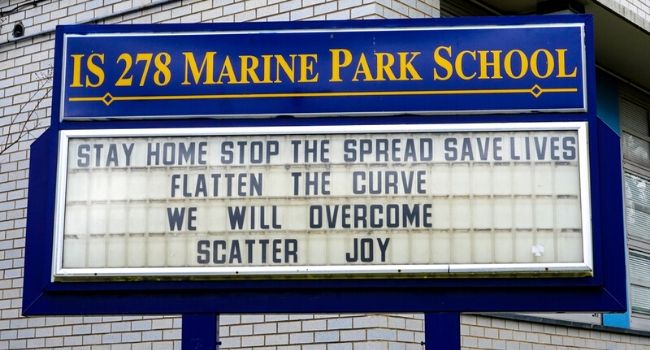
Most U.S. Schools Closed Until At Least Fall
While the Trump administration is encouraging schools to consider reopening schools sooner this spring, most state officials believe they will not resume in-person learning until the fall.
- By Ralph C. Jensen
- April 30, 2020
President Trump is asking and nudging school officials to “seriously consider” reopening schools before the end of the academic year. Most states’ governors have clearly dismissed the idea of starting up schools this spring, only to dismiss them a month later.
The president made the call while talking to governors when discussing how to reopen their economic, as well as other topics.
“Some of you might start thinking about school openings, because a lot of people are wanting to have the school openings. It’s not a big subject, young children have done very well in this disaster that we’ve all gone through,” the president said.
Outside the classroom, students are languishing, the economy has stagnated and working parents are juggling in-home classrooms at the kitchen table. If there are any K-12 schools open, they are few and far between. Most U.S. school districts have no plans to end online school, some educators have said.
California Gov. Gavin Newsom has raised the idea that the next academic year could start as soon as July, to make up for the abbreviated spring term. However, he said that “if we pull back too quickly,” a fresh wave of the coronavirus could erupt.
In Illinois, education officials are warning that remote learning could continue indefinitely.
“This may be the new normal even in the fall,” said Janice Jackson, the chief executive of Chicago Public Schools.
Like Newsom, New Jersey Gov. Philip D. Murphy has left open the prospect of schools reopening this spring — if several benchmarks are first met.
Returning students may see a school day like they’ve never seen before. For instance, there maybe staggered half-day classes, or a schedule of one day on, and one day off, so that desks would be spread out and buses can run half empty. School equipment would be sterilized, and meals would be served at a student’s desk. Teachers likely would be masked and temperature checks would be the norm. If an outbreak were detected, classes may return to a virtual experience.
In Idaho, specifically Shoshone School District in Lincoln County, where there are about 500 students, reopening this spring might happen. Class sizes are small, with the largest of 22 students, desks could be set up six feet apart. School officials, however still grapple with the idea of are they putting their students in danger?
With working parents also teaching and administering school classes, the economy cannot function normally until students have a place to stay, safely, while their parents work.
Georgia has taken the bold step to open the economy in that state, and Gov. Brian Kemp has aggressively pushed to revive the workplace. To do so, officials are aware that the economy cannot function properly until children return to school as an essential part of restoring a sense of normalcy.
“I think it’s going to be a cornerstone,” said Matt Jones, the chief of staff for the Georgia Department of Education. “There are certain elements of our society that are part of the fabric of who we are, and public education, and schooling, is just one of those things.”
Kemp has joined most governors in canceling in-person education through the academic year, which ends for most of Georgia’s public schools in mid-May. Jones said some districts were considering a restart of classes, at least in some limited form, in July for summer remedial programs. Others are hoping to return to normal in the fall.
Districts are also feeling the economic impact of the pandemic, anticipating huge budget shortfalls. And teachers are eager to return to the classroom, saying they miss the energy of real-world interaction with students.
Then there are the educational concerns. To make up for lost classroom time, schools may need to provide remedial instruction, additional special-education services and counseling, said Robin Lake, director of the Center on Reinventing Public Education.
Policy experts are also debating whether students who lag behind in key skills should be held back a grade, or advanced with extra catch-up support.
New York City officials have announced that the city’s 1.1 million students would not return to the classroom until September. Mayor Bill de Blasio has that many children will have to make up months of lost learning despite a shift to remote instruction. States also fear a shortfall of revenue when districts open up again.
In Los Angeles, where the nation’s second-largest public school system serves some 700,000 students. Superintendent Austin Beutner, said “robust” testing and tracing would have to be a prerequisite to reopening. “We closed school facilities on March 13 so our schools did not become a petri dish and cause the virus to spread in the communities we serve. That’s worked. We do not want to reverse that in a hasty return to schools.”
Lack of testing has remained an issue for states despite White House pledges to expand it. And the federal government has issued mixed guidance for districts since the outset of the pandemic, offering varying takes on the effectiveness of school closures.
In the president’s three-phase reopening plan, the government recommended that schools reopen in “Phase 2,” in which states were urged to limit gatherings to 50 people when social distancing was not possible. Educators balked, noting that schools typically house hundreds of staff members and students.